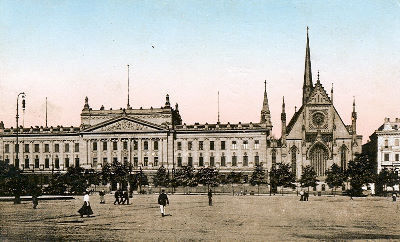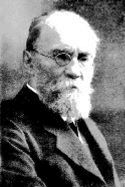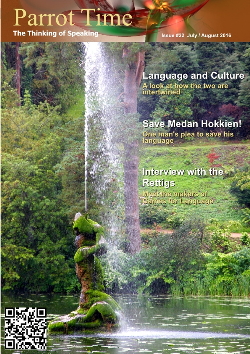Ferdinand de Saussure
Signs of Language

|
Swiss born linguist Ferdinand de Saussure is widely recognized as the creator of the modern theory of structuralism as well as the father of modern linguistics of the 20th century. He laid the foundation for many developments in linguistics, and his perception of linguistics as a branch of a general science of signs, which he called "semiology" would influence many generations to come. His work also laid the basic foundation for the concept known as structuralism in the larger fields of the social sciences. His Life  Ferdinand de Saussure was born on November 26, 1857, in Geneva, Switzerland, into a family of well-known scientists. Young Ferdinand was a bright and eager student, and he showed promise early on in the area of languages. He learned Latin, Sanskrit, Greek, English, German, and French. His mentor at that age was the eminent linguist Adolphe Pictet who encouraged the young man to pursue his growing passion for languages. Because of his parent's work, he attempted to follow in their footsteps and began attending the prestigious University of Geneva in 1875, studying chemistry and physics. He was only there a year, however, before he convinced his parents to allow him to go to Leipzig in 1876 to study linguistics. He studied Sanskrit and comparative linguistics in Geneva, Paris, and Leipzig, as well as a variety of courses at the University of Geneva, and commenced graduate work at the University of Leipzig in 1876. While in Leipzig, he became part of a circle of young scholars known as the Neogrammarians. Karl Brugmann, a prominent member of the group, was one of his mentor. He was also close to Karl Verner and others in the group.  University of Leipzig Two years later, in 1878, Saussure, now 21, published his first full-length book, "Mémoire sur le système primitif des voyelles dans les langues indo-européenes" (Dissertation on the Primitive Vowel System in Indo-European Languages). It was considered by most as a brilliant work, and the book launched de Saussure's reputation as a new expert because of its contributions to the field of comparative linguistics. This work also revealed an important discovery in the area of Indo-European languages that became to be known as de Saussure's laryngeal theory. However, the theory would not become widely accepted until the mid-20th century. De Saussure also published "Remarques de grammaire et de phonetique" (Comments on Grammar and Phonetics) in 1878. In 1880, he completed his doctoral dissertation and graduated summa cum laude from the University of Leipzig. Shortly afterwards he moved to Paris and began lecturing on ancient and modern languages.  Who Were The Neogrammarians The Neogrammarians (also known as Young Grammarians, German Junggrammatiker) were a German group of linguists, originally at the University of Leipzig, in the late 19th century. The group flourished between 1875–1893, and its primary members were Karl Brugmann, August Leskien, Hermann Osthoff, and Berthold Delbruck. Most modern linguists share the Neogrammarians' objective approach to language data and their insistence on its systematic nature. They proposed the Neogrammarian hypothesis of the regularity of sound change, in which a diachronic sound change affects simultaneously all words in which its environment is met, without exception. That is, if within a language, the way a letter or combination of letters is pronounced is alterred, all words using that combination immediately have their pronunciations change within the same area the change has been implemented. The Neogrammarian hypothesis was the first hypothesis of sound change to attempt to follow the principle of falsifiability according to scientific method (any exception that can be reliably reproduced should invalidate the simplest theory). However, today this hypothesis is considered more of a guiding principle than an exceptionless fact, because numerous examples of lexical diffusion (where a sound change affects only a few words at first and then gradually spreads to other words) have been shown. Other contributions of the Neogrammarians to general linguistics were (from Routledge dictionary of language and linguistics):
His first professional work in the field of linguistics was as a teacher at the École Pratique Des Hautes Études in Paris. There, he taught numerous languages, including Lithuanian and Persian, which he had added to his range of languages. He also became an active member of the Linguistic Society of Paris, in which he served as its secretary in 1882. He remained at the École Practique for 10 years before leaving in 1891 to accept a new position as professor of Indo-European languages and comparative grammar at the University of Geneva. De Saussure lectured on Sanskrit and Indo-European as well as teaching historical linguistics at the University of Geneva for the remainder of his life. It wasn't until 1906 that Saussure began to teach his course of "General Linguistics". It was this class which would become the basis for his perhaps most influential work "A Course in General Linguistics". This was published in 1916, three years after his death, and was edited entirely by two of his students, Charles Bally and Albert Sechehaye. The book transformed the comparative and historical philology 19th-century into the 20th-century contemporary linguistics. While living and teaching in Geneva, de Saussure married and had two sons. Saussure continued to lecture at the university for the remainder of his life until his death from cancer on February 22, 1913. There has been indication, through historical records, that de Saussure had a great fear of publishing any of his works until they were proven to be absolutely accurate. Therefore, many of his works were never released during his lifetime, and many of his theories have since been explained in books by other authors. A linguistic system is a series of differences of sounds combined with a series of differences of ideas. Also, according to Robert Godel, in an essay in "Cahiers Ferdinand de Saussure", de Saussure was "terrified" when in 1906 the University of Geneva asked him to teach a course on linguistics, because he believed himself not qualified for the job. Godel wrote that de Saussure "did not feel up to the task, and had no desire to wrestle with the problems once more. However, he undertook what he believed to be his duty." The editors of his posthumous work, "A Course in General Linguistics", Bally and Sechehaye have been criticized for not clearly showing how their professor's ideas evolved as well as for not making clear that de Saussure rarely believed his innovative concepts to be wholly formed. Scholars have also cited evidence that de Saussure was strongly influenced by his academic peers, William Dwight Whitney and Michel Bréal, suggesting that de Saussure's theories were not as original as they were once believed to be. Before he died, de Saussure had told some friends that he was writing up his lectures himself, but no evidence of this was found. In 1996, eighty years later, a manuscript in Saussure's handwriting was found in his family home in Geneva. This proved to be the missing original of the work, and in 2002, "Écrits De Linguistique Générale" (Writings in General Linguistics, prepared by Simon Bouquet and Rudolf Engler) was published. This new textual source answers several questions about what de Saussure believed. It also brings to light new elements which require a revision of the legacy of Saussure, and call into question the reconstruction of his thought by his students in the Course in General Linguistics. |
| Ferdinand de Saussure - Signs of Language | ||||||||||||
| Writer: | Sofia Ozols | |||||||||||
| Images: | ||||||||||||
| ||||||||||||
| Sources: | ||||||||||||
| ||||||||||||
All images are Copyright - CC BY-SA (Creative Commons Share Alike) by their respective owners, except for Petey, which is Public Domain (PD) or unless otherwise noted.
comments powered by Disqus



















